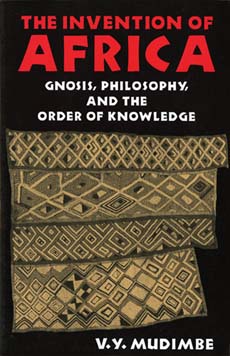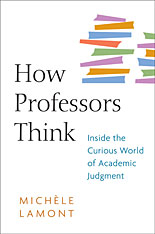For Stanley Fish, no matter the consequences!
Several years ago, as a high school senior in Tanzania, I was faced with the choice of where to pursue my college education. For a number of practical reasons, the choice seemed to be between the United States, the United Kingdom, and India, and it was not too much of an effort on my part to decide that the United States was the way for me to go. What appealed to me most about the American model was an open embrace—an insistence even—on a liberal arts education. Both the British and the Indian systems asked for an early commitment—in the case of India, to being in either the arts, commerce, or the sciences—a commitment I was not yet prepared to make.
My undergraduate years in the United States saw me majoring in English, but in addition to the common liberal arts distribution requirements, I also found myself pursuing a certificate in African studies, which meant that my coursework was multi-, if not inter-, disciplinary. The questions of disciplinarity and its relation to area studies continued to be of interest to me as I pursued my doctoral work, guided, among others, by V. Y. Mudimbe, the Zairean multi- and interdisciplinarian who, in addition to his pioneering work on The Invention of Africa,1 Indiana University Press, 2008 More info → coedited Africa and the Disciplines2
Indiana University Press, 2008 More info → coedited Africa and the Disciplines2 University of Chicago Press, 1993 More info → ; Barbara Herrnstein Smith, who was at the forefront of conversations between literary studies and science studies; and Stanley Fish, who published a much-circulated essay titled “Being Interdisciplinary Is So Very Hard to Do,”3 Fish, Stanley. “Being Interdisciplinary Is So Very Hard to Do.” Profession (1989): 15-22. Read online → which, with much admiration, I echo, along with the title of one of Fish’s deservedly celebrated essay collections, in the title of my own contribution here. The book that ultimately came out of my dissertation was concerned with the interfaces between disciplinary knowledges and Africanist scholarship. Over the years, I have found my most engaged and engaging interlocutors among colleagues in history and anthropology and found my own reading materials to come as much from those domains as from the world of literary criticism.
University of Chicago Press, 1993 More info → ; Barbara Herrnstein Smith, who was at the forefront of conversations between literary studies and science studies; and Stanley Fish, who published a much-circulated essay titled “Being Interdisciplinary Is So Very Hard to Do,”3 Fish, Stanley. “Being Interdisciplinary Is So Very Hard to Do.” Profession (1989): 15-22. Read online → which, with much admiration, I echo, along with the title of one of Fish’s deservedly celebrated essay collections, in the title of my own contribution here. The book that ultimately came out of my dissertation was concerned with the interfaces between disciplinary knowledges and Africanist scholarship. Over the years, I have found my most engaged and engaging interlocutors among colleagues in history and anthropology and found my own reading materials to come as much from those domains as from the world of literary criticism.
Thinking back on that training, I cannot help but agree with David Engerman when he points to the pedagogical value of interdisciplinarity at both the undergraduate and graduate levels. Indeed, debates around interdisciplinarity often assume that we were all always securely positioned within disciplines before discovering interdisciplinary research, when in fact, for many of us, a good liberal arts education may well have simultaneously proceeded along disciplinary and interdisciplinary lines. Indeed, as Harvey Graff has reminded us, disciplinarity and interdisciplinarity are mutually constituted and should not be thought of oppositional. George Steinmetz further argues that we should think of disciplines as social fields that are dynamic, relational, internally heterogeneous assemblages rather than as unified totalities. Why then, given this shared ethos of a liberal arts background in the United States, as well as a recognition that disciplines evolve to accommodate pressing needs, do we still worry about interdisciplinarity?
One way to consider this is through the paradox best articulated by Arjun Appadurai in his 1997 Items article:
The sense of discipline associated with liberal learning, critical thinking, and citizenship is part of an ethic of self-cultivation and cosmopolitanism that lies at the heart of liberal social thought. But the sense of discipline associated with research has little to do with the creation of cultivated, cosmopolitan citizens and much to do with the techniques and protocols for training specialists and producing disciplinary knowledge. The gap between these two senses of ‘discipline’ remains largely unrecognized and, as a result, unbridged.
The quote offered by Engerman of the scholar in the SSRC archives who notes that “I can imagine a man trained in areas as being a most charming gentleman and interesting conversationalist but not as being a scholar” is perhaps the most dramatic instantiation of this misrecognition and prejudice.
And yet, Immanuel Wallerstein and the team of scholars associated with the Gulbenkian Commission on Restructuring the Social Sciences recommended in their report that graduate students in the social sciences be required to take a mandatory minor in another department. They proposed that at least a quarter of any given student’s coursework be in some department other than the one in which the student sought to matriculate. While I am unaware of any efforts to formalize this recommendation, my past service on the review panels for the SSRC’s International Dissertation Research Fellowship (IDRF) Program suggests that at least in some quarters of the social sciences, many of the most competitive applicants take it upon themselves to be trained in a multi-, if not inter-, disciplinary way. One successful applicant, for instance, had coursework in urban theory and history, anthropology, urban planning, architectural history, art history, comparative literature, urban studies, and cultural geography; another in anthropology, South Asian studies, philosophy, religion, Islamic studies, history, Middle Eastern studies, history of art, archaeology, and English. I have never met these individuals, but judging by the success of their applications, I imagine that while they may well be “interesting conversationalists,” they were most decidedly deemed by the review panels to be significant and promising scholars.
Finding interdisciplinarity in IDRF proposals
The IDRF program provides a useful lens to examine some of the assumptions and claims that often get articulated in discussions of interdisciplinary research. In the interests of confidentiality, I cannot, of course, discuss individual proposals in any detail, but I do want to give some sense of the kind of work that I saw funded and the nature of some of the debates that my colleagues and I had on one of the review panels in the four years that I served on it.
“The program ‘supports work that increases humanistic knowledge (broadly understood) across the disciplines.’”It should be clear at the outset that the parameters of the program mean that certain scholarly tendencies and dispositions are more successful than others. For one, only proposals for site-specific dissertation research are funded by the program. This means that a proposal that was only involved in a computational model that could be developed in any office with the requisite equipment would not be eligible for funding. Visits to archives and to field sites to conduct ethnographies, surveys, or interviews tend to get a more favorable hearing than proposals that have no such component. A second important criterion is that the program “supports work that increases humanistic knowledge (broadly understood) across the disciplines,” and one of the prompts on the application specifically asks applicants to speak to the ways in which their particular project seeks to do so. Thus, while technically all methodological approaches are welcome, the competition by its nature tends to favor more interpretivist, rather than more positivist, scholarly dispositions. Finally, while allowing for a comparative focus on US contexts, the program is intended for non-US based research topics. The international orientation of the program raises the question of the extent to which the program engenders a broader internationalization of social science research, a challenge raised by Appadurai in his Items article, and to which I will return.
Interdisciplinarity itself is not a formal criterion for eligibility in the competition (such as site-specific research or non-US focus), but all applicants are asked to answer the question as to how approaches, concepts, and debates from other disciplines inform their projects. In all the promotional and informational materials on the program, applicants are advised that their proposals will go through multiple rounds of review and thus must pass muster with experts within their disciplines, but also those outside of them, and with specialists familiar with their geographical areas, but also those unfamiliar with them. Proposal readers as well as the review panelists are asked to bear in mind the transregional as well as potentially transdisciplinary reach and pay-off of the project. Furthermore, the program has built into it post-research workshops for awardees who have returned from their respective research locations. By their very nature, the workshops are spaces of interdisciplinary exchange. This too informs the kinds of projects that are deemed by both readers and review panelists to be ideal candidates for the IDRF and those that are less so. But ultimately, it is fair to say, the IDRF program shares with Michael Kennedy the belief that interdisciplinarity is not a categorical variable—having more or less interdisciplinarity is not an indicator of value by itself—but that (and this is Kennedy again), interdisciplinarity and cross-cultural expertise combined can enhance reflexivity and strengthen research. The hardest part (and judgment call) on the part of the review panel is to figure out that which Kennedy rightly suggests is not at all obvious: interdisciplinarity’s relationship to rethinking foundational questions, discovering hidden issues, and figuring knowledge’s implications for the public good.
The IDRF program was one of the fellowships that Michèle Lamont studied as part of her research on scholarly evaluation. Her account in How Professors Think4 Harvard University Press, 2010 More info → of how review panels function accords for the most part with my own experience, but it seems in retrospect that I was fortunate to not have some of the outlier fields she mentions represented among my own cohort of panelists. While we sometimes vigorously debated on whether or not a particular methodology was an ideal one for the task that the applicant had set at hand, or whether the bibliography had sufficient reach both within and outside of the applicant’s disciplinary home, I don’t recall a single debate on a matter such as the importance of having area and particularly language expertise when it came to evaluating proposals. To be sure, we might query whether or not working in a particular archive or sphere of governance required a deep knowledge of the local languages involved, but these queries seemed to be of a pragmatic, and not epistemological, sort.
Harvard University Press, 2010 More info → of how review panels function accords for the most part with my own experience, but it seems in retrospect that I was fortunate to not have some of the outlier fields she mentions represented among my own cohort of panelists. While we sometimes vigorously debated on whether or not a particular methodology was an ideal one for the task that the applicant had set at hand, or whether the bibliography had sufficient reach both within and outside of the applicant’s disciplinary home, I don’t recall a single debate on a matter such as the importance of having area and particularly language expertise when it came to evaluating proposals. To be sure, we might query whether or not working in a particular archive or sphere of governance required a deep knowledge of the local languages involved, but these queries seemed to be of a pragmatic, and not epistemological, sort.
The features of promising interdisciplinarity
Looking back over my notes from those years, the family resemblances between the proposals on which we achieved greatest and often most immediate consensus included at least one, but often both, of two features:
1. Proposals that demonstrated an engagement with the scholarly literature and/or concepts from a variety of disciplines in a meaningful way, or as Jerry Jacobs puts it, proposals displaying a “diversity of source ideas.” This might be a proposal by an applicant in literary studies, for instance, that successfully brought together the sociological work of Lefebvre and Bourdieu with economic historians who have looked at trade and merchant networks, or a proposal from a historian working on matters of an empire much neglected as an empire in conventional historiography who brought together work in environmental history, history of science, and international relations, or finally, a proposal by an anthropologist who fruitfully brought together discourses developed in indigenous and native studies with legal treatments and classifications of race.
2. Proposals that brought into productive play methods originating in different disciplinary domains. Here, I should note that Erin Leahey’s discussion of the different payoffs between interdisciplinary projects between cognate fields and those that are seen to be relatively cognitively different rings true to me as a reader of these proposals. Bringing together the archival methods of the historian with the ethnographic methods of the anthropologist is indeed technically interdisciplinary, but less innovative and eyebrow raising today than it might have been two or three decades ago. Bringing together global information systems methods to readings of novels, or using the rapidly developing network analysis tools in the digital humanities to trace linkages between authors traditionally read only as part of their national canons are methodological innovations that held great potential.
There are two further points on these features that I should register here. First, I should say that while a particular strength in at least one of these features was a necessary condition for success, given the intense level of competition, it was often not a sufficient condition. The ultimate test (and again, as anyone who has served on a review panel knows, this is as much an “art” as a “science”—and I mean here for the irony of the distinction between art and science to resonate with all its reverberations), was often transregional and transdisciplinary reach. Might this proposal and study have something to offer those interested, say, not only in Fiji, but also in other parts of the world? Might this proposal and study shift methodological, conceptual, and/or representational registers not only in, say, the discipline of art history, but also in others? The former question touches on the heated debates about area studies that David Engerman refers to when he mentions the discomfort of some area studies scholars with the levels of generalization that the SSRC moved towards in its emphasis on the transregional. The latter returns us to the questions posed by Arjun Appadurai in his provocative and generative thought piece on the very idea of research.
“Evaluators calibrated the degree and nature of expected interdisciplinarity to the disciplinary position of the applicant.”Second, I think it fair to say that within the limits of my four-year experience on the review panel, many (though not all) evaluators calibrated the degree and nature of expected interdisciplinarity to the disciplinary position of the applicant. Let me speak solely for my own readings. I was less impressed when a literary critic demonstrated significant or even extraordinary knowledge of the literature from corollary fields such as anthropology, history, media studies, science studies, intellectual history, environmental studies, economic history, and so on. Reading widely and across disciplines has long been the norm for the best scholarship in the field. But when a literary scholar demonstrated the ability to work beyond the normative methodologies—by doing ethnographic or archival research (and by archival research, I don’t mean studying original manuscripts in special collections of libraries—which has long been a staple in the discipline, but rather working in archives not directly related to the manuscripts of a particular author), or by using innovative digital tools to ask hitherto unanswerable questions, this always struck me as potentially moving the field in a new direction (sometimes in a direction that I didn’t necessarily endorse personally, but recognized as important to others in the discipline and thus endorsable on my part as a nonpartisan evaluator). When it came to a historian or an anthropologist, I was less impressed that the historian was doing something other than archival work or the anthropologist doing something other than ethnography or interviews since I expect the best among them to use hybrid methods as appropriate to the project. Rather, I was most impressed when I came across an anthropologist who could meaningfully cite and incorporate poetry into their project, or a historian who could demonstrate ways in which their research could speak to contemporary public concerns, and moreover provide concrete plans on how they would publicly disseminate the results of their research.
Reading through the previous contributions to this Items forum on interdisciplinarity has helped me retrace some of the work of the review panels that I served on. For instance, on the question raised by Appadurai on internationalizing or deparochializing the social sciences, I would have to say that the best proposals engaged with scholarship that balanced US-based research with scholarship originating in the areas studied (including, often, in languages other than English), and they often included a public component in the dissemination of results (a website, for instance). But it would be fair to say that most would not have fulfilled the public advocacy agenda of global activism and change that Appadurai seems to call for in his manifesto for a strong internationalism.
Alas, the exhilarating work of those four years is now behind me, so I cannot take up this and other questions in any sustainable manner. Or at least not yet—not until I am enlisted to serve again on a different interdisciplinary review panel, a prospect (in case any program officers are reading this) that I would most welcome!














